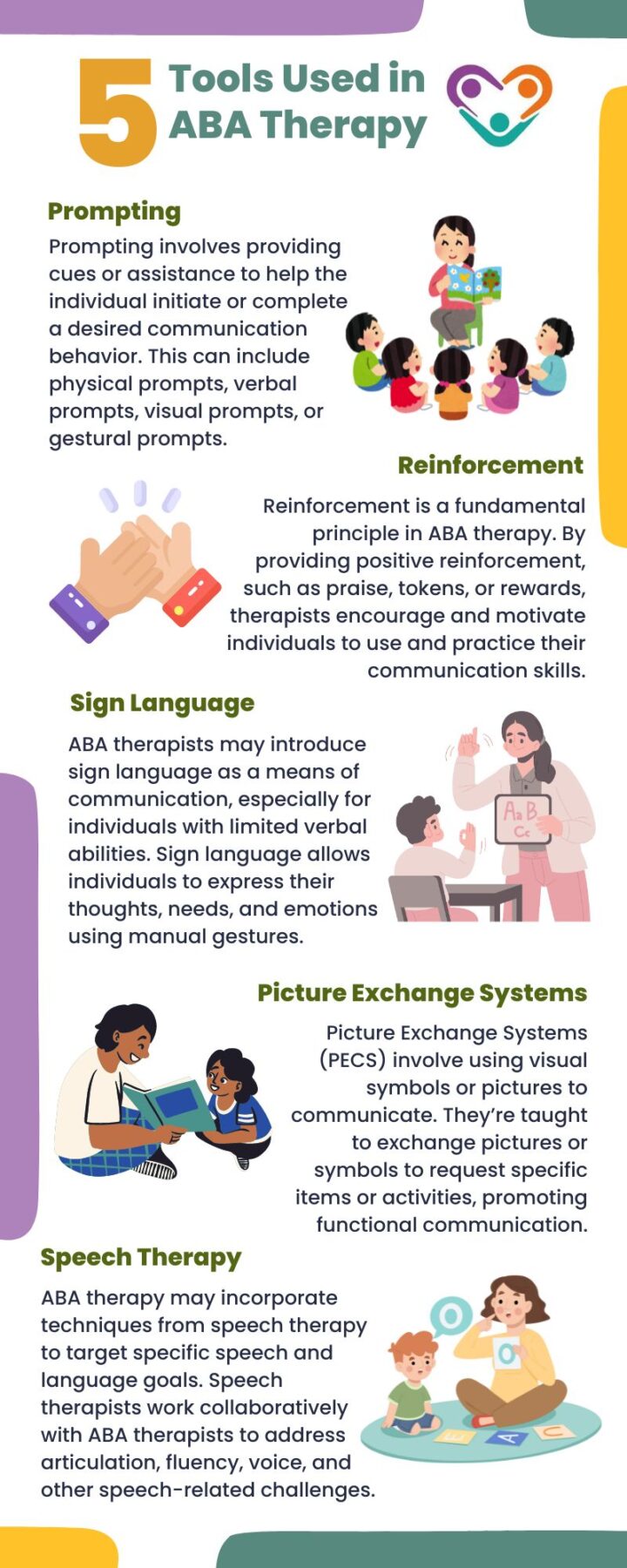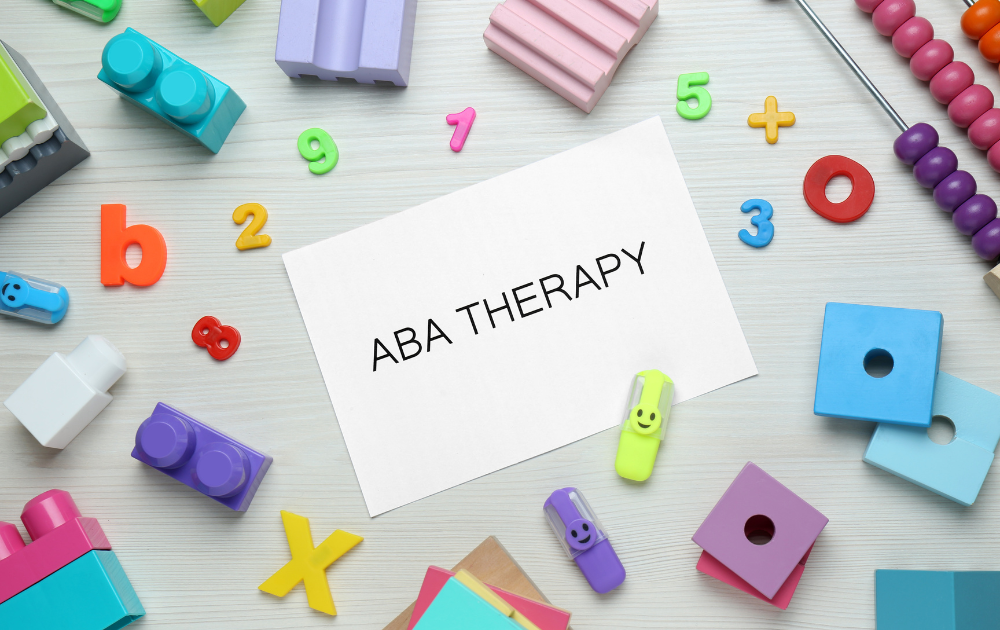
Table of Contents
When it comes to ABA therapy, it is important for parents and caregivers to assess the progress of their child’s treatment. ABA therapy, or Applied Behavior Analysis, is a highly effective intervention for individuals with autism. By understanding the principles of ABA therapy and recognizing its benefits, parents can gain insight into whether the treatment is working for their child.
Understanding ABA Therapy
ABA therapy is a comprehensive, evidence-based approach that aims to teach skills, decrease problematic behaviors, and generalize learned behaviors to new environments or situations. It utilizes techniques such as reinforcement, prompting, modeling, and shaping to help individuals with autism develop essential life skills. Lessons and activities are tailored to the specific needs and interests of each child.
To determine if ABA therapy is effective, it is crucial to have a clear understanding of what the therapy entails. ABA therapy is rooted in the belief that behavior is influenced by the environment. By systematically analyzing behavior and implementing strategies based on the principles of behavior analysis, ABA therapists work to improve the lives of individuals with autism.
Benefits of ABA Therapy
Decades of rigorous scientific research have demonstrated the efficacy of ABA therapy in increasing learning and decreasing challenging behaviors in individuals with autism. ABA therapy has been shown to have a positive impact in various areas, including communication, social skills, focus, flexibility, safety awareness, and more. Through data collection and analysis, therapists are able to track progress and make informed adjustments to the treatment plan.
When assessing the effectiveness of ABA therapy, it is important to consider the individual goals set for the child. Progress may be observed in areas such as language development, social interactions, and adaptive skills. Additionally, positive changes in problem behaviors, such as a reduction in tantrums or self-injurious behaviors, can also indicate the success of the therapy.
In the next sections, we will further explore how ABA therapy addresses communication skills, behavior modification, focus, and attention. We will also discuss the key indicators of a quality ABA program. Stay tuned for valuable insights and guidance on maximizing the benefits of ABA therapy for your child.
Communication Skills
Effective communication is a vital skill for individuals with autism, and ABA therapy plays a crucial role in enhancing their communication abilities. ABA therapists employ various strategies and techniques to help children with limited speech or difficulty in expressing their wants and needs. Let’s explore how ABA therapy enhances communication abilities and the tools used in the process.
Enhancing Communication Abilities
ABA therapy aims to teach communication skills and reduce communication challenges in individuals with autism. Therapists work closely with each child to develop a personalized treatment plan that addresses their specific needs and goals. Through a systematic and structured approach, ABA therapists use evidence-based techniques to facilitate communication development.
Some common goals of ABA therapy for communication include:
- Improving expressive language skills: ABA therapists utilize techniques like prompting, reinforcement, and speech therapy to foster the development of expressive language. This can involve teaching children to use words, gestures, signs, or augmentative and alternative communication (AAC) systems to effectively communicate their thoughts and needs.
- Enhancing receptive language skills: ABA therapy also focuses on improving receptive language abilities, helping individuals understand and comprehend spoken language, instructions, and social cues. This involves techniques such as modeling, prompting, and reinforcement to reinforce receptive language skills.
- Building social communication skills: ABA therapy incorporates social skills training to help individuals with autism develop the ability to engage in meaningful social interactions. This may involve teaching turn-taking, initiating conversations, understanding nonverbal cues, and more.
Tools Used in ABA Therapy
ABA therapists utilize various tools and techniques to facilitate communication development. These tools are tailored to the unique needs and abilities of each individual. Some commonly used tools in ABA therapy for communication include:
By employing these tools and strategies, ABA therapy aims to empower individuals with autism to effectively communicate and interact with others. It is important to note that communication progress may vary for each individual, and the treatment plan should be regularly evaluated and adjusted based on the specific needs and progress of the child.
Behavior Modification
ABA therapy aims to teach skills, decrease problematic behaviors, and generalize learned behaviors to new environments or situations. In this section, we will explore how ABA therapy addresses problematic behaviors and focuses on replacing self-injurious behaviors.
Addressing Problematic Behaviors
One of the primary goals of ABA therapy is to address and modify problematic behaviors commonly observed in individuals with autism. Problematic behaviors can include aggression, self-injury, tantrums, noncompliance, and more. ABA therapists work closely with parents and caregivers to develop behavior intervention plans that target these behaviors effectively.
To address problematic behaviors, the therapist first conducts a functional behavior assessment (FBA) to understand the underlying causes and functions of the behavior. This assessment helps identify triggers, antecedents, and consequences associated with the behavior. Based on the findings, a behavior intervention plan (BIP) is developed to systematically address the behavior.
The BIP typically includes strategies such as positive reinforcement, prompting, modeling, and shaping. These techniques are tailored to the individual child’s needs and interests. The goal is to replace the problematic behavior with more appropriate and socially acceptable alternatives.
Replacing Self-Injurious Behaviors
In some cases, individuals with autism may exhibit self-injurious behaviors like hand-biting, head-banging, or skin-picking. ABA therapy approaches these behaviors with compassion and aims to replace them with safer alternatives that serve the same sensory needs.
Therapists carefully assess the underlying causes of self-injurious behaviors and work closely with the child to identify alternative behaviors that fulfill the same sensory needs. For example, if a child engages in head-banging to seek stimulation, the therapist may introduce alternative activities like using sensory toys or engaging in physical activities that provide similar sensory input.
Replacing self-injurious behaviors requires patience, consistency, and ongoing support from the therapist, parents, and caregivers. It is crucial to understand that these behaviors serve a purpose for the child and finding suitable alternatives is essential for their well-being.
By addressing problematic behaviors through ABA therapy and focusing on replacing self-injurious behaviors, individuals with autism can learn more appropriate ways to communicate their needs and navigate their environment. It is important for parents and caregivers to collaborate closely with ABA therapists to ensure the success of behavior modification strategies.
Focus and Attention
In ABA therapy, one of the key areas of focus is building attention span and improving focus in individuals with autism. Enhancing these skills can have a significant impact on a child’s ability to learn and engage in various activities. Let’s take a closer look at building attention span and strategies for improving focus in ABA therapy.
Building Attention Span
Children with autism often struggle with maintaining attention for extended periods. ABA therapy addresses attention deficits by gradually building stamina through structured work systems, visual supports, or reinforcement for sustained focus. Lessons start with brief tasks that the child can successfully complete, rewarding small instances of attentiveness. As the child’s skills improve, the tasks gradually expand in duration and complexity.
By breaking down activities into manageable segments and providing reinforcement, ABA therapy helps children develop the ability to focus for longer periods. This increased attention span can then be applied to various learning activities and tasks both inside and outside of therapy sessions.
Quality ABA Programs
When it comes to ABA therapy, the quality of the program plays a vital role in determining the effectiveness of treatment. A high-quality ABA program focuses on creating effective lessons and applying ABA principles to maximize the progress of individuals with autism.
Creating Effective Lessons
A quality-focused ABA program involves creating lessons and activities that are tailored to the individual child’s needs and interests. These lessons are designed to build on the child’s strengths and target increasing social, communication, play, and pre-academic skills.
The creation of effective lessons relies on the expertise of highly trained professionals who have a deep understanding of ABA principles and techniques. They utilize various teaching strategies, such as reinforcement, prompting, modeling, and shaping, to facilitate skill acquisition and development.
By incorporating the child’s interests and preferences into the lessons, ABA therapists can increase engagement and motivation, making the learning process more enjoyable and effective. This individualized approach ensures that the child is actively involved in their own learning journey.
Application of ABA Principles
ABA principles have been proven to be effective not only in autism therapy but also in other fields such as addiction and substance abuse, gambling, eating disorders, forensic analysis, gerontology, and other mental health specialties. This showcases the strength of ABA-based interventions in addressing diverse challenges.
In a high-quality ABA program, the application of ABA principles is consistent and systematic. Therapists closely monitor the progress of the child and make data-driven decisions to modify and refine the treatment plan as needed. Regular assessments and evaluations are conducted to measure skill acquisition and identify areas that require additional focus.
A crucial aspect of quality ABA therapy is the use of positive reinforcement. Instead of focusing solely on eliminating problem behaviors, the emphasis is placed on building skills. Positive reinforcement is utilized to reward and motivate the child for their progress and achievements. This approach fosters a supportive and encouraging environment that promotes the child’s self-esteem and overall well-being.
By adhering to the principles and techniques of ABA, a high-quality program empowers individuals with autism to reach their full potential. It provides them with the necessary tools and strategies to navigate the challenges they may face and thrive in various environments.
In conclusion, the effectiveness of ABA therapy is greatly influenced by the quality of the program. Creating effective lessons tailored to the individual child’s needs and applying ABA principles consistently are key factors in achieving successful outcomes. By partnering with a reputable ABA provider that prioritizes individualized care and evidence-based practices, parents can ensure that their child receives the highest quality of ABA therapy.
Red Flags in ABA Therapy
As a parent or caregiver of a child receiving ABA therapy, it’s important to be aware of potential red flags that may indicate concerns or the need for further evaluation. Identifying these red flags can help ensure that your child is receiving effective and appropriate treatment. Let’s explore two key aspects to consider: identifying concerns and the importance of skill development.
Identifying Concerns
One red flag in ABA therapy may be if the therapy does not address the underlying skill deficits that lead to problem behaviors. Effective ABA therapy should focus on understanding why the child engages in certain behaviors, rather than solely focusing on stopping those behaviors. By addressing the root causes, therapists can help the child develop alternative, more appropriate behaviors.
Another concern to watch out for is when therapy focuses primarily on eliminating problem behaviors, rather than building skills. A quality ABA program recognizes the importance of skill development and places emphasis on teaching new skills to the child. Positive reinforcement should be given to the child for their progress, rather than solely punishing them for mistakes. This approach helps foster a positive learning environment and encourages the child’s motivation to learn and grow.
Importance of Skill Development
A key aspect of successful ABA therapy is the focus on skill development. A high-quality ABA program for a child should involve creating lessons and activities that build on the child’s strengths while targeting areas of improvement. These lessons should aim to increase social, communication, play, and pre-academic skills.
ABA therapy utilizes various techniques, such as reinforcement, prompting, modeling, and shaping, to help the child acquire and generalize new skills. Lessons are tailored to the individual child’s needs and interests, ensuring that they remain engaged and motivated throughout the therapy process. By focusing on skill development, ABA therapy aims to equip the child with the necessary tools to navigate everyday situations and lead a more independent and fulfilling life.
When seeking ABA therapy for your child, it is important to ensure that the therapists involved are highly credentialed. The most qualified practitioners in the field are known as board-certified behavior analysts (BCBAs). These professionals undergo specific training requirements and must complete 1,500 hours of supervised fieldwork. Choosing a therapist with the appropriate credentials can provide you with confidence in the quality of the therapy being provided. Remember to advocate for your child’s best interests and seek out high-quality therapy that prioritizes skill development and individualized treatment approaches.
Sources:
https://www.getanswersnow.com/blog/10-signs-your-child-could-benefit-from-aba-therapy
https://asatonline.org/research-treatment/clinical-corner/quality-aba-program/
- Autism Routine Disruption in Adults: Coping Tips - July 16, 2024
- Autism and Obsession: An Overview - July 16, 2024
- Autism and Taking Clothes Off: Management Tips - July 16, 2024



